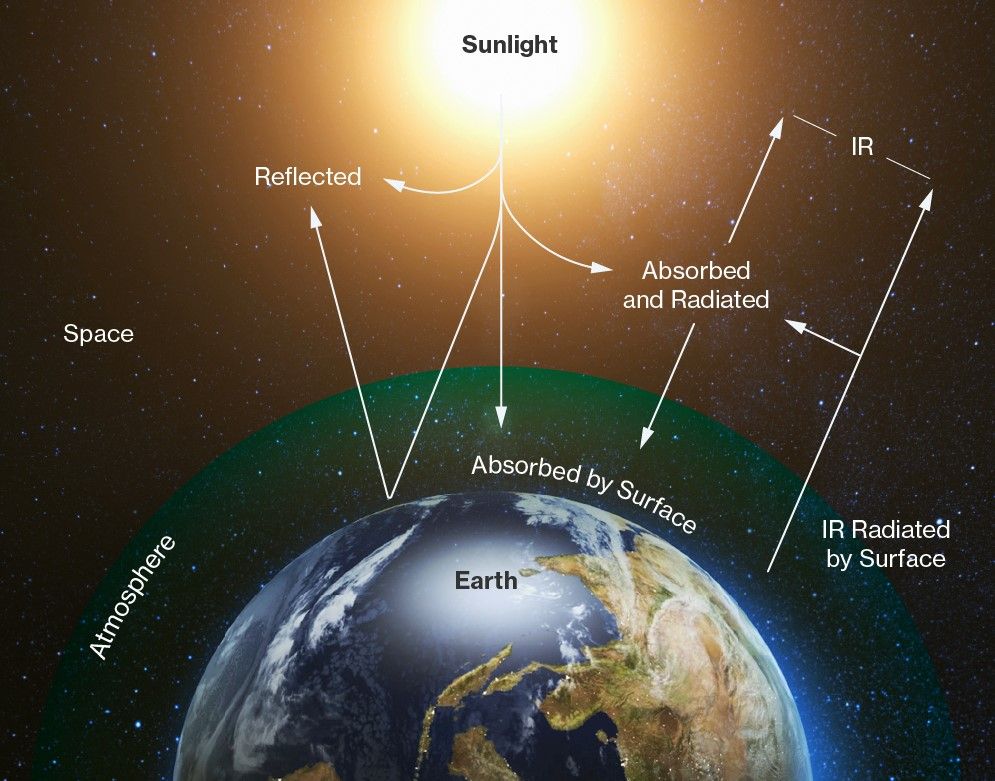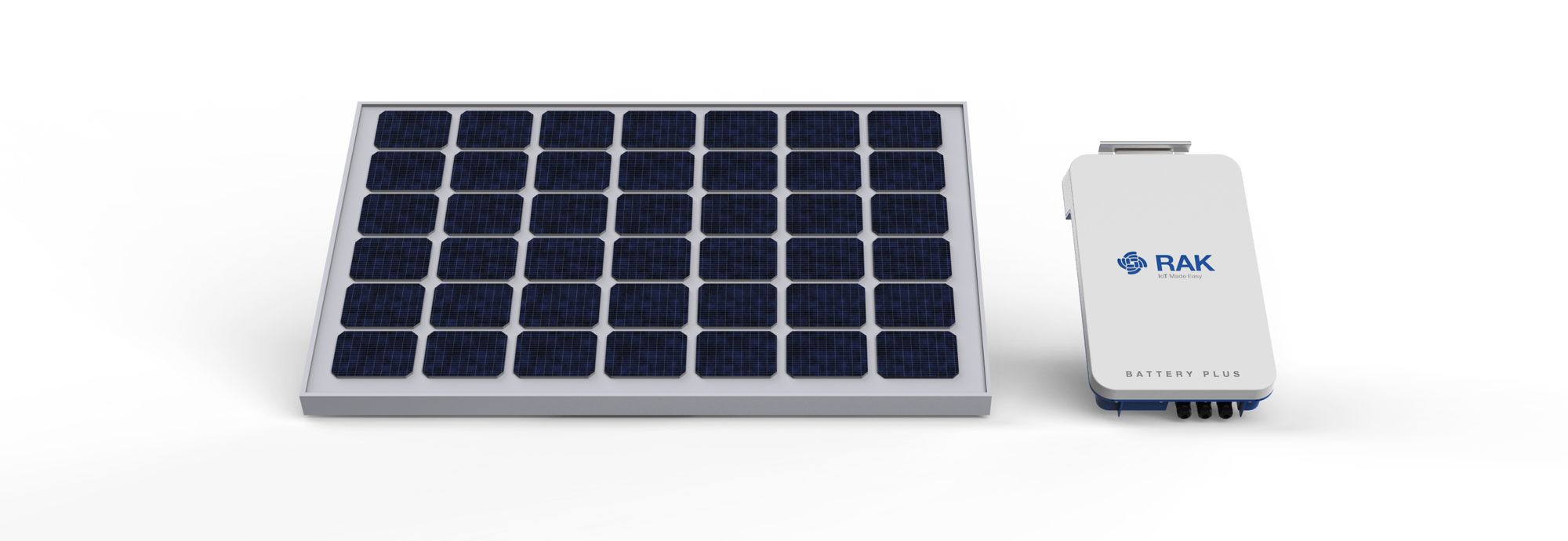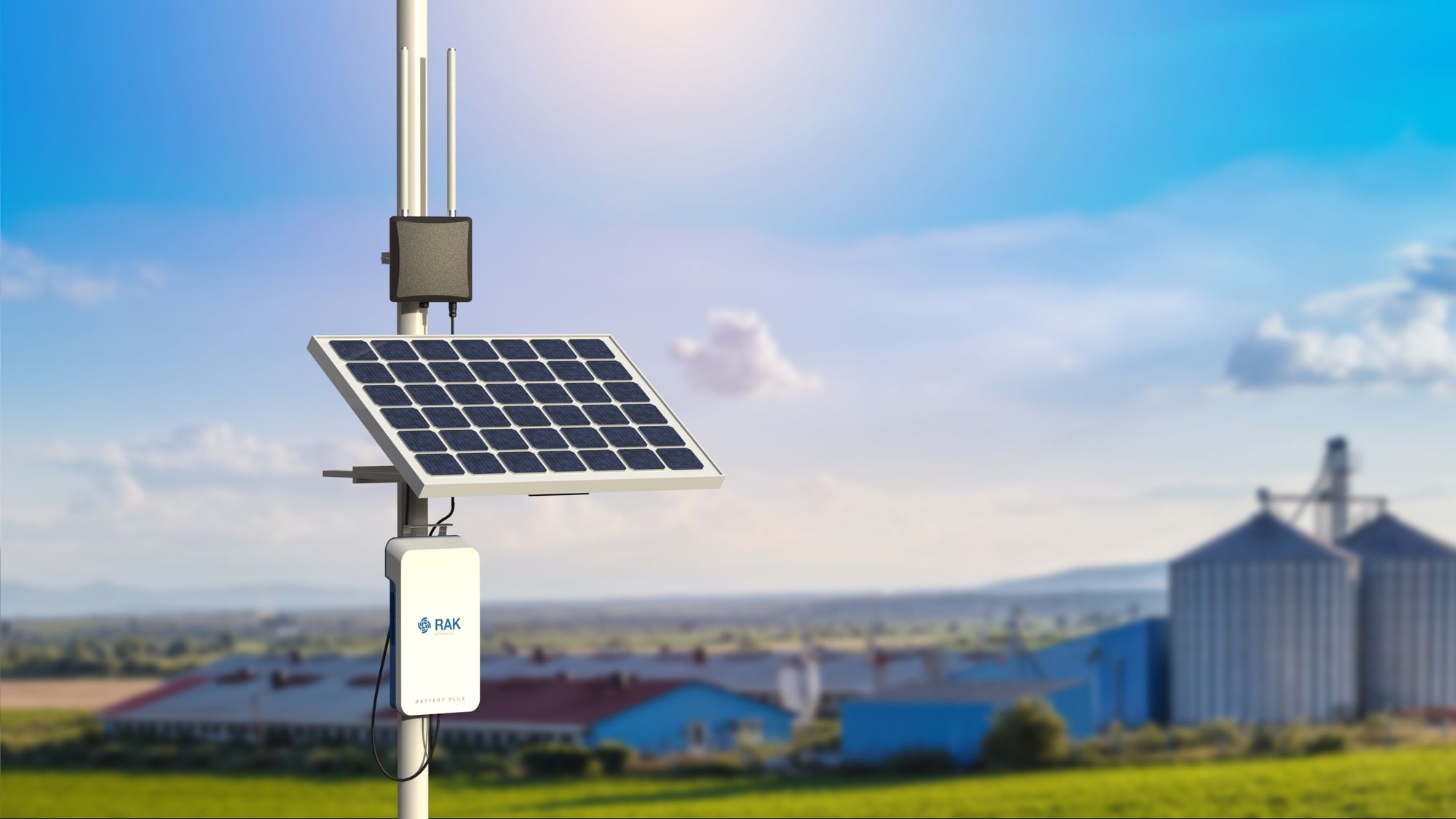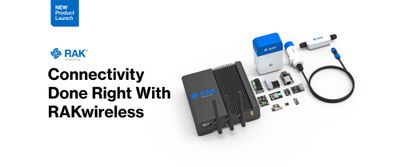How to Build a Sustainable, Solar-Powered LoRaWAN® Network
Let’s talk a bit about solar energy. Why? That will become clear in a bit if the title didn’t give you a hint already.
What is Solar Energy and How is it Generated?
What we perceive as sunlight is actually solar radiation, a result of the nuclear fusion that happens constantly in the sun. It is the energy output of that reaction that, if captured, can be converted into another type of energy. The law of physics is that energy is never lost, just transformed.
The most common way of turning the sun’s energy into electricity is through solar photovoltaic (photo-light, voltaic-electricity) modules (PV modules). Those modules capture and absorb sunlight and convert the energy into a usable form of electrical current.
Since the sun shines over the whole planet, its energy can be harvested from any part of the Earth’s surface. And because this process can be paired with batteries for energy storage, such systems can be independent of the utility grid, making them suitable for utilization in remote locations.

Why use Solar Snergy?
A quick Google search will provide a lot of lengthy and in-depth answers to that question. The advantages of solar power are numerous, and they all make a compelling case in favor of using it.

- Renewable – This is maybe the most important advantage. In a world struggling for resources, one that is practically infinite is a blessing. That makes for sustainable solar-powered applications.
- Cost-efficient – Even though the initial investment may be considered large, the low maintenance cost and the practically free energy make this one of the most budget-friendly power solutions. At least long-term.
- Diverse applications – Solar energy can be used in every power-requiring aspect of modern life, regardless of location. Solar technologies use the power from the sun and turn it into electricity used for heating, cooling, lighting, and power for a host of applications.
- Continuous development – As technology grows and evolves as a whole, so does every niche within it individually. The ways and tools used for acquiring and using solar energy are getting more effective as we speak. Solar panels are becoming cheaper and better every day, have a lifespan of roughly 30 years, and come in a variety of shapes and sizes.
- Eco-friendly – The solar panels used to gather the sun’s power don't use other resources (like water) to generate electricity. Their work doesn’t result in the release of harmful gases or other waste into the environment. just clean energy.
Solar Energy and Batteries – Battery Plus
As we mentioned in the beginning, solar panels are often paired with batteries to provide a more reliable power solution for a variety of applications. As solar energy does not have a flat 24-hour distribution, one uses batteries to store energy when it is overproduced and utilizes it as reserves when there is less to convert. This makes for a reliable solution that can produce constant output and power an application indefinitely.
RAK offers an integrated battery solution, incorporating a solar charging system and status monitoring options. Battery Plus (RAK9155) is a perfect example of result-oriented technology. It is specially developed to work in combination with WisGate Edge Pro gateways. The solution aims to keep your gateway powered 24/7 via the solar panel option and provide all the battery data and status in the WisGateOS’ Web UI locally, and via WisDM remotely. With this 50Ah battery, your gateway can run for more than 2 days without sunlight.
The battery acts like a buffer energy-storing unit in a way. The gateway won’t be reliant only on the sun and the continuous working of your network will be ensured.

When is a Solar-Powered Application a Good Idea?
The answer is… always!
Such a solution will allow reliable outdoor deployment of the gateway in remote off-grid scenarios where the power is unreliable or inaccessible. But don’t think that such locations as rural areas and untamed nature are the only suitable places. It is true that it is the most common use case for the sole reason that it is just easier. But the absence of a permanent and/or reliable power grid should not be the only motivation to implement solar power into your solution.
The striving to switch to renewable and clean energy is something that every modern city experiences too. If done correctly, a solar-powered solution can benefit the city’s infrastructure while providing power for your project or even other projects at the same time. There is no need for laying cables, digging, and all that messy work, plus it will reduce operation and maintenance costs as you will be less reliant on the grid.
Solar Panels – Choose the best one
We intentionally decided to ship the Battery Plus without a panel for several reasons. First there is logistics. PV modules are big and heavy. That makes it hard to transport them, not to mention customs and certification complications. Next comes the cost. We want to keep our products in a reasonable price range, and adding a panel will inevitably be added to that. We are also considering that the panel we decided to offer may not be the one that fits your project, which leads to the third reason - the right of free choice. But how do you choose your solar panel?
In the article "How to access LoRaWAN using solar energy, " we explained the two things you need to do to determine what parameters your PV module of choice should have.

- Calculating the battery capacity – By purchasing RAK Battery Plus you are ensuring that your battery capacity is enough as it is designed to accommodate the common use case and the WisGate Edge Pro power needs. It is still good to know how to calculate it yourself, but we are not going to go into detail on that as you can read about it in the aforementioned article.
- Calculating the solar panel rating – That is the tricky part. Again, this was explained with an example calculation in the article above. When calculating, always go for the worst-case scenario, to ensure continuous work for your devices even in extreme situations. There are tools that can help you with that like the one on the NASA POWER (Prediction of Worldwide Energy Resources) website.
Depending on your location and setup requirements, the needed solar panel may vary a lot. By pairing the Battery Plus with one specific solar panel of our choice, we would limit its application even if that panel is as universal as possible. Do some math and purchase a solar panel that will suit you best, or even better – trust your local experts.
The Perfect Positioning and Mounting
The good positioning of your setup is crucial for ensuring continuous work. Calculating the right angle and direction for the PV module may prove tricky. As we have explained before the NASA POWER website shows the different irradiance levels for different tilt angles of your solar panels. Use it to determine the best tilt angle for your position and requirements.
Don’t forget that to maximize the energy produced by the solar panel, it must be pointed to the Equator (South for locations in the Northern Hemisphere and vice versa) at a tilt angle that is equal to your location’s latitude.
When we talk about a solar panel in combination with the Battery Plus and the compatible WisGate Edge Pro, we recommend a certain way for mounting your three elements. When positioning your solution, you must have in mind better light gathering and the network itself. So, the proper position will accommodate not only the PV module but the gateway as well.
Why is the gateway on top and not the solar panel? A reasonable question. The first instinct would be to put the panel on top, so it gathers the most sun, correct? Yes, but it would be wrong in the context of the network. You see, the gateway can’t work without the antennas, and if you position the large solid body of the panel over them it will just block the signal. It is that simple! To ensure good coverage for the gateway, eliminate the obstacle by positioning it on top of the setup. And don’t worry about the gateway shadowing your panel, it is not nearly big enough to matter at all.
By mounting the Battery Plus below the solar panel, you effectively shield it from the elements. Not that it needs it, but it is always good to go the extra mile.

As for how exactly to mount your devices, each comes with a comprehensive guide. Go to the Installation part of the Quick start guide for either the Battery Plus or the WisGate Edge Pro and just follow the steps.
Harnessing the power of the sun for industrial applications is getting more popular every year. Why not do the same for IoT?
Read more: How LoRa Can Help You Save The Battery Life of Your IoT Device






